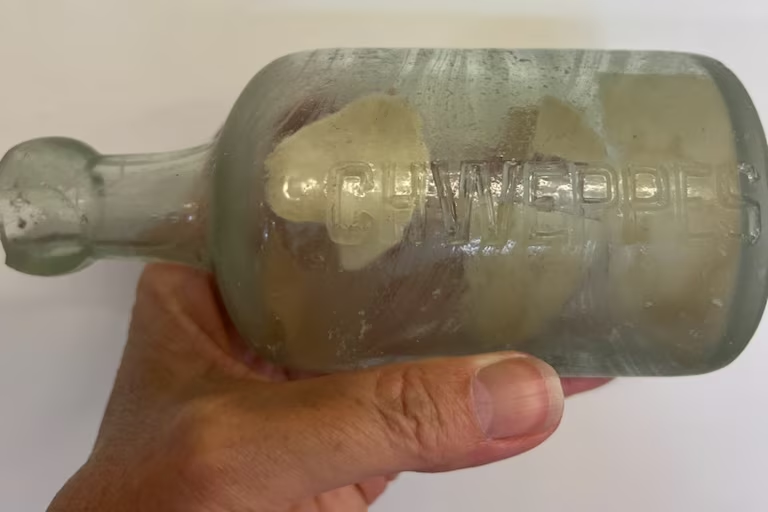Two handwritten letters sealed in a glass bottle for more than a century have resurfaced on a beach in Western Australia.
Others are reading now
The letters’ reappearance adds another layer of history to Wharton Beach, where recent tides have also revealed traces of an ancient wetland buried beneath the sand.
Found in the sand
Debra Brown and her daughter Felicity were collecting litter on Wharton Beach when they spotted an old bottle with rolled papers inside. ‘
What they found turned out to be two letters written in 1916 by Australian soldiers aboard a troop ship bound for war.
The first was from South Australian soldier Malcolm Alexander Neville, who wrote to his mother while sailing on the HMAS Ballarat.
Dated just three days after the ship left Adelaide, the letter was signed “somewhere at sea.”
Also read
Neville cheerfully described life on board, telling his mother the food was “really good,” except for one meal that was “buried at sea.”
He added: “The [Ballarat] is heaving and balling, but we are happy as Larry. Your loving son, Malcolm.”
A soldier’s fate
Records show Neville had been discharged early in 1916 for poor eyesight but reenlisted shortly after. Less than a year later, in April 1917, he was killed in battle in France at the age of 28.
When Debra Brown found the bottle, she began tracing the soldiers’ families. After searching online, she reached Neville’s descendants, who were astonished.
“It’s been unbelievable,” said relative Herbie Neville.
Also read
His 101-year-old aunt often spoke of “Uncle Malcolm,” who never returned from the war.
“It’s amazing how much has come to the surface about his short time in WWI,” he said.
Brown plans to send the letters to Neville’s family while keeping the bottle and its covering note.
Another letter revealed
Inside the same bottle, Brown later discovered a second letter written by Private William Kirk Harley, who described being “somewhere in the Bight” as his ship crossed the Great Australian Bight.
Harley survived the war and went on to have children. His granddaughter, Ann Turner, said the discovery “feels like a miracle.”
Also read
“We are all absolutely stunned,” she said. “There are five grandchildren who are still alive. We’ve been in constant contact since it happened, and we just can’t believe it.”
Turner said Harley’s words reflected the optimism of men heading to the front lines.
“The poor darling had gone off, not knowing what he was about to face, and he seemed quite chipper in the letter,” she said.
History comes ashore
Local historian Maureen Steinborner said the find had sparked “fantastic interest” in the community.
“It just makes people think about their history a little bit more, and what actually happened,” she noted.
Also read
Experts say such discoveries are extraordinarily rare. University of Western Australia oceanographer Charitha Pattiaratchi explained that ocean currents can carry sealed bottles for vast distances, and preserve them for decades if conditions are right.
Sources: The Sun, Virtual War Memorial Australia


